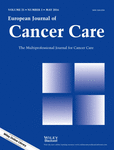Older people living alone at home with terminal cancer
Abstract
This study describes the lived experiences of older people coping with terminal cancer and living alone, focusing on how they face challenges of the biographical life changes from their disease progression. Face-to-face semi-structured interviews were conducted in two phases with palliative care clients of a community-based service in Western Australia (2009–2011): Brief interviews with 43 cancer patients who live alone and then in-depth interviews with 8 of them. Using biographical disruption as the analytical framework for interpreting the qualitative data, four main themes emerged: Biographical disruption: adjusting to change; Biographical continuity: preserving normality; Biographical reconstruction: redefining normality; and Biographical closure: facing the end. Biographical disruption was a suitable framework for analysis, permitting identification of the biographical disruptions of the individual's world and the reframing that is undertaken by the individual to maintain autonomy and independence while acknowledging and accepting their closeness to death. Understanding the factors associated with the individual's need to maintain their own identity will enable nurses working with this population to tailor support plans that meet the individuals’ needs while maintaining or restoring the person's sense of self. Interventions that directly address end-of-life suffering and bolster sense of dignity and personhood need to be considered.




